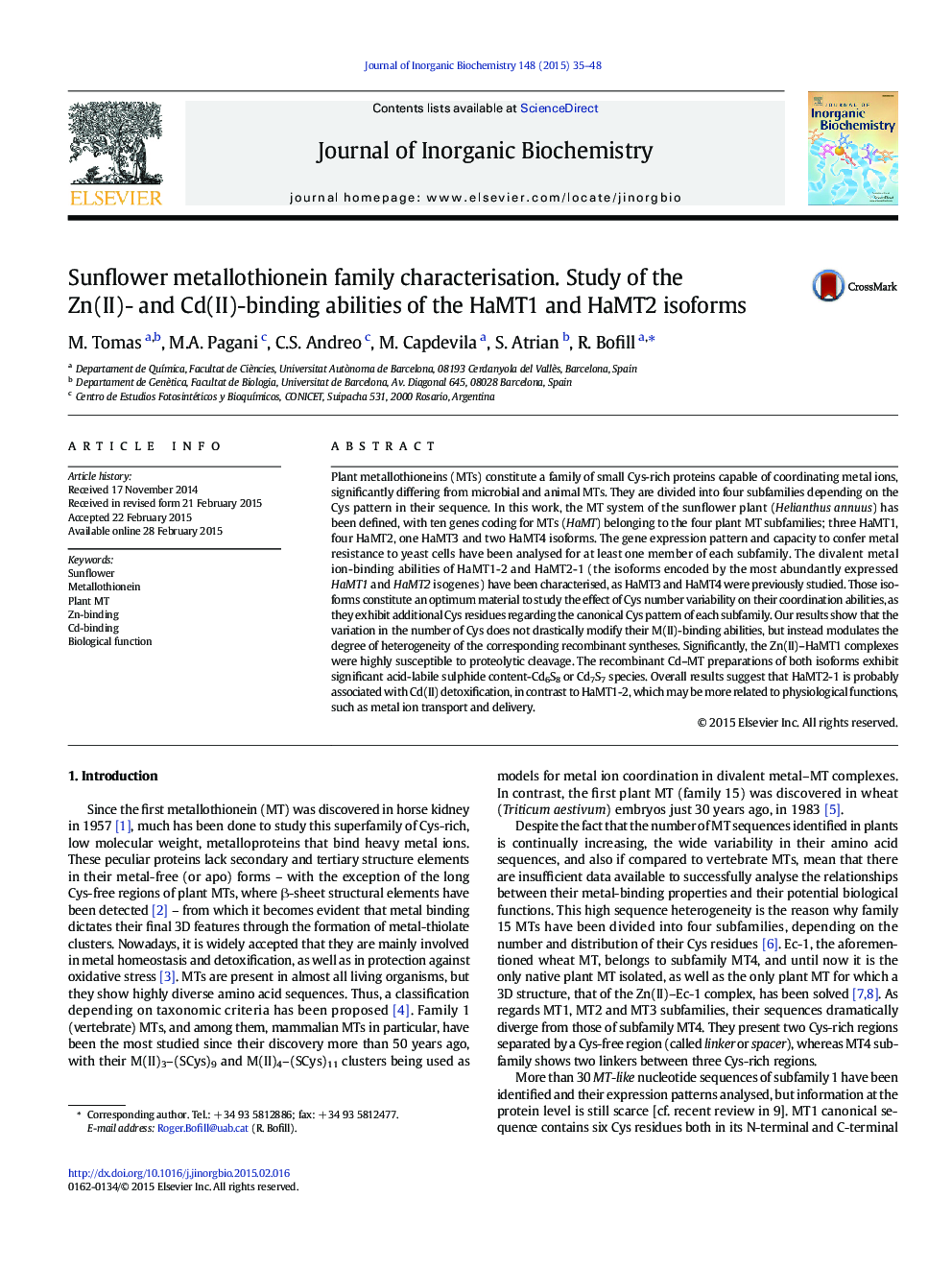| کد مقاله | کد نشریه | سال انتشار | مقاله انگلیسی | نسخه تمام متن |
|---|---|---|---|---|
| 1316067 | 1499439 | 2015 | 14 صفحه PDF | دانلود رایگان |

• Ten MT genes are identified in sunflower belonging to the four plant MT subfamilies.
• HaMT1-2 and HaMT2-1 are the genes transcribed at the highest basal levels.
• HaMT1-2 and HaMT2-1 contain extra Cys that modulate their M(II) binding abilities.
• The M(II)–HaMT1 complexes exhibit a precise proteolytic cleavage.
• HaMT1 may be involved in metal transfer and HaMT2 in Cd(II) detoxification.
Plant metallothioneins (MTs) constitute a family of small Cys-rich proteins capable of coordinating metal ions, significantly differing from microbial and animal MTs. They are divided into four subfamilies depending on the Cys pattern in their sequence. In this work, the MT system of the sunflower plant (Helianthus annuus) has been defined, with ten genes coding for MTs (HaMT) belonging to the four plant MT subfamilies; three HaMT1, four HaMT2, one HaMT3 and two HaMT4 isoforms. The gene expression pattern and capacity to confer metal resistance to yeast cells have been analysed for at least one member of each subfamily. The divalent metal ion-binding abilities of HaMT1-2 and HaMT2-1 (the isoforms encoded by the most abundantly expressed HaMT1 and HaMT2 isogenes) have been characterised, as HaMT3 and HaMT4 were previously studied. Those isoforms constitute an optimum material to study the effect of Cys number variability on their coordination abilities, as they exhibit additional Cys residues regarding the canonical Cys pattern of each subfamily. Our results show that the variation in the number of Cys does not drastically modify their M(II)-binding abilities, but instead modulates the degree of heterogeneity of the corresponding recombinant syntheses. Significantly, the Zn(II)–HaMT1 complexes were highly susceptible to proteolytic cleavage. The recombinant Cd–MT preparations of both isoforms exhibit significant acid-labile sulphide content-Cd6S8 or Cd7S7 species. Overall results suggest that HaMT2-1 is probably associated with Cd(II) detoxification, in contrast to HaMT1-2, which may be more related to physiological functions, such as metal ion transport and delivery.
Ten metallothionein (MT) genes have been identified in sunflower and their expression pattern analysed. The study has been performed on the Zn(II) and Cd(II) binding abilities of the more expressed isoforms at basal levels, and showed that HaMT1 may be involved in metal transfer processes, and HaMT2 in Cd(II) detoxification.Figure optionsDownload as PowerPoint slide
Journal: Journal of Inorganic Biochemistry - Volume 148, July 2015, Pages 35–48